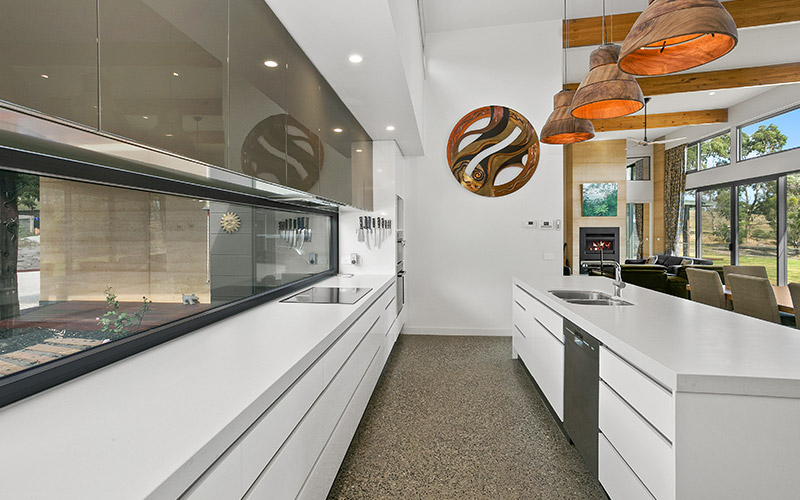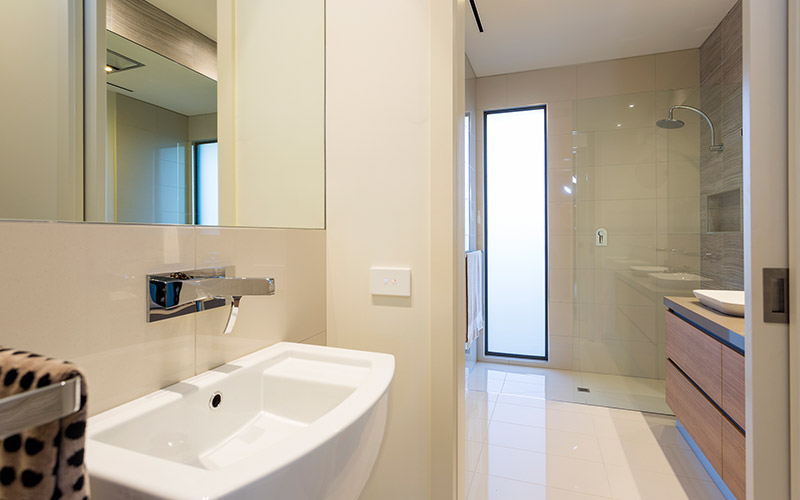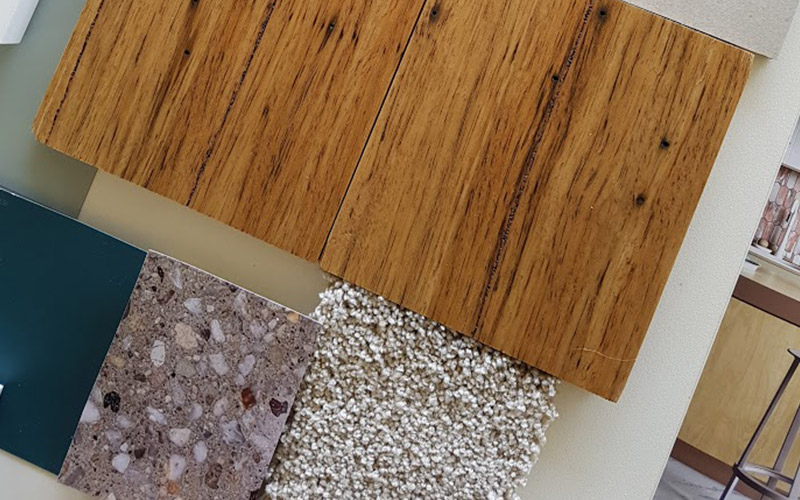If you are looking for a versatile flooring solution that is timeless, sustainable, and... well…

What is the Best Flooring to Put in Your New House?
For some, a new house with blank walls and no flooring could sound like a nightmare. So much work to do. For others, however, it’s the perfect opportunity to create the home of their dreams.
If you fall in with the second crowd, you probably already know what your dream home looks like. The high ceiling, the stylish iron rails on the staircase, the glass chandelier over the dining table.
But there is one detail many people fail to think about although it’s equally, if not more important. A detail that can bring style, comfort, and warmth to your home: the floor coverings.
Most Popular Types of Floor Coverings
You probably can think of four or five floor coverings right away. But today’s diverse market can provide you with a lot more options to choose from to fully satisfy your needs. To make sense of the variety of solutions, here are some of the most popular flooring types available.
Polished Concrete
Until recently polished concrete was reserved for the great hallways of public buildings and small office spaces. Basically, everywhere that huge amounts of people walking around are expected. In recent years, however, it’s becoming a more popular option for residential houses as well.
If you are looking for durability, polished concrete may as well be the most durable flooring type available. The reason is in the advanced polishing technology that grinds the concrete to its glossy finish. A quality polished concrete floor should never need to be coated or waxed.
An important feature that you need to consider is that concrete is very cold and hard to heat up. If you live in an area with a hotter climate, it may be just what you need. However, in moderate climate zones, you better look for another flooring type to avoid huge heating bills.

Hardwood Timber Flooring
When it comes to the classics, hardwood timber flooring is unquestionably what comes to mind first. It has been used ever since the 17th century and has never lost its popularity because it is just as durable as it is beautiful.
Hardwood floor solutions are made of solid pieces of wood that are laid directly over the concrete, joists, or battens.
Although the beautiful warm timber palette is one of its greatest benefits, if you are looking for something a bit more distinguishable there is a range of color-washed or reclaimed-looking styles available.
On the cons side, hardwood floor coverings require maintenance to be done by a professional. When repair is required it should be sanded and refinished by a specialist. If you decide to do it on your own, you risk increasing the damage.
Another disadvantage comes with the price. The solid timber tongue and groove flooring can be quite expensive so you should carefully consider if you are ready for such an investment.
There is, however, one major benefit of natural timber flooring. It will never go out of style. Yes, it may be pricey to install, but it will raise the value of your home significantly. And if you don’t intend to sell, you’ll enjoy the coziness it brings for decades.
Engineered Timber Flooring
When it comes to functionality and quality, engineered timber flooring is similar to natural hardwood. Engineered timber is made by fusing together 4 or 5 layers of timber, that are then prefinished. The main benefit coming from this technology is that they don’t need to be sanded and refinished, which reduces the maintenance costs greatly.
Floor coverings of engineered timber also take a lot less time to install compared to tongue and groove flooring.
Although they generally come in the higher price range for natural timber, you should note that engineered timber comes with a variety of hardness ratings that also correspond to their durability.
Still, engineered timber has some disadvantages too. It tends to scratch and dent, especially if you like walking around your home on heels.
Parquetry Timber Flooring
Parquetry is one of the most expensive floor coverings on the market. The reason behind its price is the craftsmanship involved in producing the beautifully designed patterns and the traditionally more complicated installation process.
Parquet was originally made famous by Louis XIV (who replaced all the marble floors in the Palace of Versailles with parquet). – houseandgarden.co.uk
The tile-shaped timber blocks are assembled of smaller parts that eventually create a mosaic. The patterns can be created especially for you. Although, if you want to stick to a budget there are also beautiful prefabricated designs to choose from.
Whether it’s installed in your living room or just at the entrance, parquetry inspires a feeling of warmth and classic elegance.
It must be noted, however, that although parquetry brings all the advantages of natural timber like durability and comfort, it also brings along their disadvantages. Parquetry should not be installed in rooms with high humidity or flooding potential because you risk damaging your floor to a point where it won’t just look bad, but you’ll lose your investment as well.
Laminate Timber Flooring
If you are a fan of the classy look of timber floor coverings but cannot, or just don’t want to, invest significant amounts into high-end solutions, you may turn to laminate flooring instead.
Laminate timber is not natural wood. Instead, it is a picture of timber over a vinyl board. Although not timber, it can still have the same level of detail and sometimes even texture.
It is usually easy to install and even easier to maintain. The option for quick sweeping or mopping with standard cleaning products adds to the benefits of this flooring type.
While such flooring is sold at a considerably lower price than natural timber solutions, it still offers long durability and the same warm and snug comfort. Also, one of the benefits of laminate, compared to hardwood, for example, is that it is less prone to be damaged by high humidity in the room.
Still, their installation in a wet room such as a bathroom or utility room is inadvisable.
Bamboo Timber Flooring
If you are interested in living green, then you should definitely consider bamboo timber flooring for your home. Bamboo is quick and easy to grow, so it is considered one of the most environmentally friendly sources of flooring.
Bamboo timber is also resistant to dust and mold, which creates a good environment for families with kids or those who suffer from asthma or allergies. Some of the other benefits of bamboo include the variety of natural colors and coffee shades, as well as the easy installation.
On the negative side, bamboo flooring is more delicate compared to hardwood. It is more prone to scratches and dents, especially if you have pets.
Vinyl Flooring
Vinyl flooring’s greatest advantages are the affordable price, the ease of installation and maintenance, and the variety of designs it’s available in.
This type of flooring usually comes in two standard formats – planks (laminate) and on a roll.
Vinyl on a roll is probably the most affordable and easy to install flooring solution on the market. It provides decent insulation and is fairly resistant to water when installed properly. Still, in case of flooding, water may fall between the edges of the roll and mold formations may appear underneath.
Even with a beautiful shade or pattern, vinyl floor coverings tend to look flat and cheap. Therefore, they may not be your first option for the common rooms in your house. However, if you need a covering for a side room like a cellar, for example, or if you’re renting and you are not willing to invest in luxury flooring, vinyl is the perfect choice.

Tile Flooring
If you are looking for low-maintenance flooring, tiles are probably your best option. Whether they are porcelain or ceramic, a tiled floor does not require any special cleaning products because it is usually stain-resistant. A quick round with the vacuum or mop will make your floor look as good as new, making the effortless cleaning one of the greatest benefits of tiled floor coverings.
Another general benefit of tiled floors is that they are relatively easy to replace in case you break one or two. Keep in mind, however, that most batches of tiles have differences in the color tone even if they are of the same pattern. When you purchase tiles for your home it is advisable to get a few extra, just in case you need to replace any in the future.
Waterproofing is another benefit of both porcelain and ceramic tiles, which makes them a perfect solution for wet or high-humidity spaces.
Porcelain Tile
Naturally, there are some differences between porcelain and ceramic tiles.
Porcelain tiles are on the high-end when it comes to pricing. They require a skilled professional to cut them and install the flooring.
The main difference, however, comes from their water absorption rate. Porcelain is considered to be more impervious to water by absorbing only 0.5%.
It is also believed that compared to ceramics, porcelain has fewer imperfections.
Ceramic Tile
Ceramic tiles, on the other hand, are a more affordable option. They are easier to cut and therefore easier to install.
Ceramic tiles absorb more water. While porcelain makes for a good outdoor flooring, ceramic tiles should not be installed outdoors because under freezing temperatures the water they have absorbed is likely to crack them.
Still, in indoor conditions and unless you are planning on installing them yourself, the differences between porcelain and ceramic tiles are negligible.
Carpet
One of the most popular flooring options, carpets can be seen in almost every home.
Whether you prefer a full coverage carpet or a smaller sized rug over your timber floor, carpets have many advantages worth mentioning. One of the features that distinguish them from almost all other floor coverings is that they absorb sound, which makes them ideal for quiet rooms like your bedroom or study. Carpets are also slip-resistant. This does not only make it hard to slip and fall, but if you or your kids do fall the soft surface will reduce the impact to a minimum.
Regardless of the style of your room, there is a pretty good chance you’ll find exactly what you need to match it perfectly. The unlimited variety of colors, patterns, and fabrics provides something for every style and taste.
If you prefer a more luxurious flooring, don’t be in a hurry to renounce carpets yet. Consider investing in wool carpets that are made of natural wool, or a carpet with velvet piles for a soft and suede-like appearance.
Related: Carpet Trends
Flooring Ideas For Your New Home
It turns out flooring is much more than a color or pattern base for your room. Although you may be tempted to select your flooring based on its looks only, there are many more things to add to the equation. Does the room have high traffic? Is there any potential for leaking or just high humidity? Do you have kids? Do you have pets? How much time and money are you willing to invest into maintaining your floor?
Let’s take a look at these sorts of questions in order to find the best types of flooring for different rooms in your home.
Kitchen and Dining Room
Kitchens often get messy. And you don’t even have to spill the food directly to the floor. Cooking, dining with kids, storing the daily trash. There are so many ways to get the floor dirty that you really need an easy to clean solution.
Add to this the potential for a leaking dishwasher and you will understand why a tiled floor or polished concrete has always been the preferred option for a kitchen and dining room floor.
When you choose the design of your tiles, keep in mind that light tiles create the illusion for more space and bring more light into the room. Avoid flat colors as any dust or dirt will show easily. Instead, try something with veins or subtle patterns.
If you are not a fan of the standard tiled look, there is still a way to add the warm and cozy feeling of the timber to your kitchen. The latest tendency for timber-styled tile patterns is an alternative worth considering.
Living Room
For a classy looking living room with a touch of luxury, timber flooring is the obvious choice. However, although it’s durable, warm, and creates unique comfort, natural timber is sensitive to high traffic, moisture, and paw scratches.
If you like the spirit of timber but the conditions in the room make it impossible to preserve it in the long run, you could try going for laminate or even timber-styled tiles.
Aside from the living conditions, the other factor to consider is your budget. Timber flooring solutions come at a vast range price with parquetry on the top and laminate near the bottom. How much are you willing to spend is entirely up to you. If you are aiming for durability, however, it may be better to invest in natural timber flooring.
If you have kids running around your living room then you may need more slip-resistant flooring like a carpet. Still, for those who are not ready to give up on the timber, a cozy, soft rug over the high traffic areas will protect the wood underneath.
Timber-styled tiles are another trendy alternative, especially if you live in a warmer area. Avoid plain tile designs for your living room as they may look out of place.Bedroom and Kids Room
When you think about your bedroom, do you imagine a quiet and cozy place to rest? If this is the case then you should think about adding a carpeted floor to your bedroom. It will reduce the noise in the room so you won’t be woken up when your significant other gets up for work early in the morning. It will also feel warmer even on those cold winter nights.
On the other hand, if you are not very fond of carpeted floors, hardwood timber flooring will also keep the warmth and provide a romantic atmosphere. And if you want the best of both worlds, why not combine the timber flooring with a soft rug over the busiest area.
A carpeted floor is also an ideal option for your nursery or older kid’s room. The soft fabric will insulate the floor providing an extra play area for your little ones without worrying that they are too cold. Being slip-resistant also adds to the safety of their personal space.
Bathroom and Utility Room
When it comes to the bathroom, it is pretty obvious that a lot of water is involved. The utility room, however, although a generally dry space, could also encounter damaged washing machines, for example, that can leak on to the floor.
To avoid any damage you need a completely waterproof solution for your floor. Therefore tiled floors are undeniably your best options if you want to avoid potential problems.
Whether you’ll go for porcelain, ceramic, or marble, there is no shortage of colors and styles to choose from. For the bathroom, slip-resistant textured tiles are a way to reduce the risk of an accident to a minimum.
In more dark places such as the utility room, choose a lighter tone that will open up the space. Dark tiles create a more intimate feel. Although they are trendy, they also create a feeling of smaller space and in bathrooms they are harder to clean because of the limestone that may be building on them.
Let Pivot Homes Help You Find the Best Flooring For Your New House
At Pivot Homes, we have been helping homeowners like you design and build the house of their dreams for almost 30 years. As you work out your plans for your custom new home, don’t hesitate to reach out to us for assistance choosing everything from flooring to roof. Try out our Custom Home Building Calculator today!












This Post Has 0 Comments